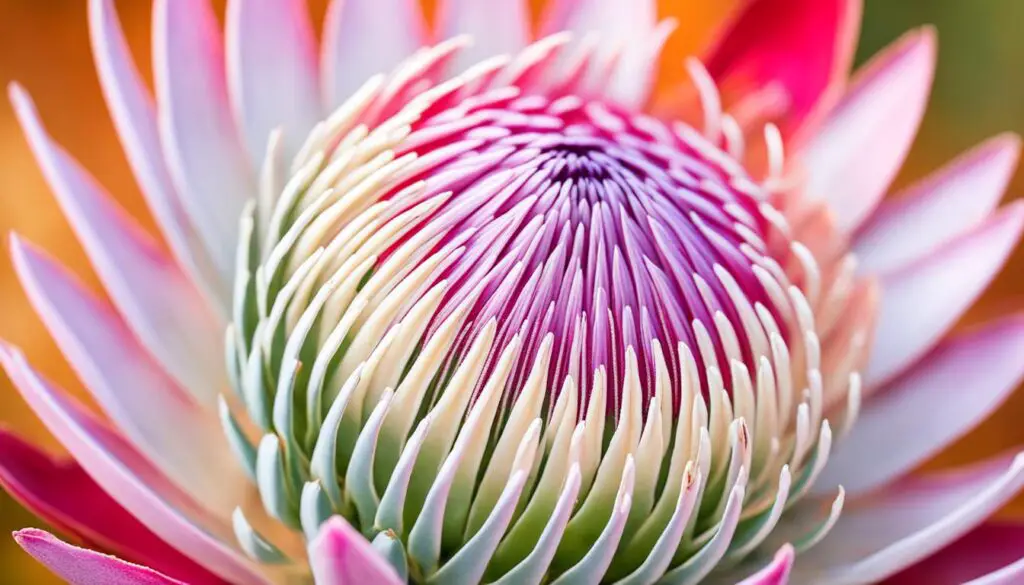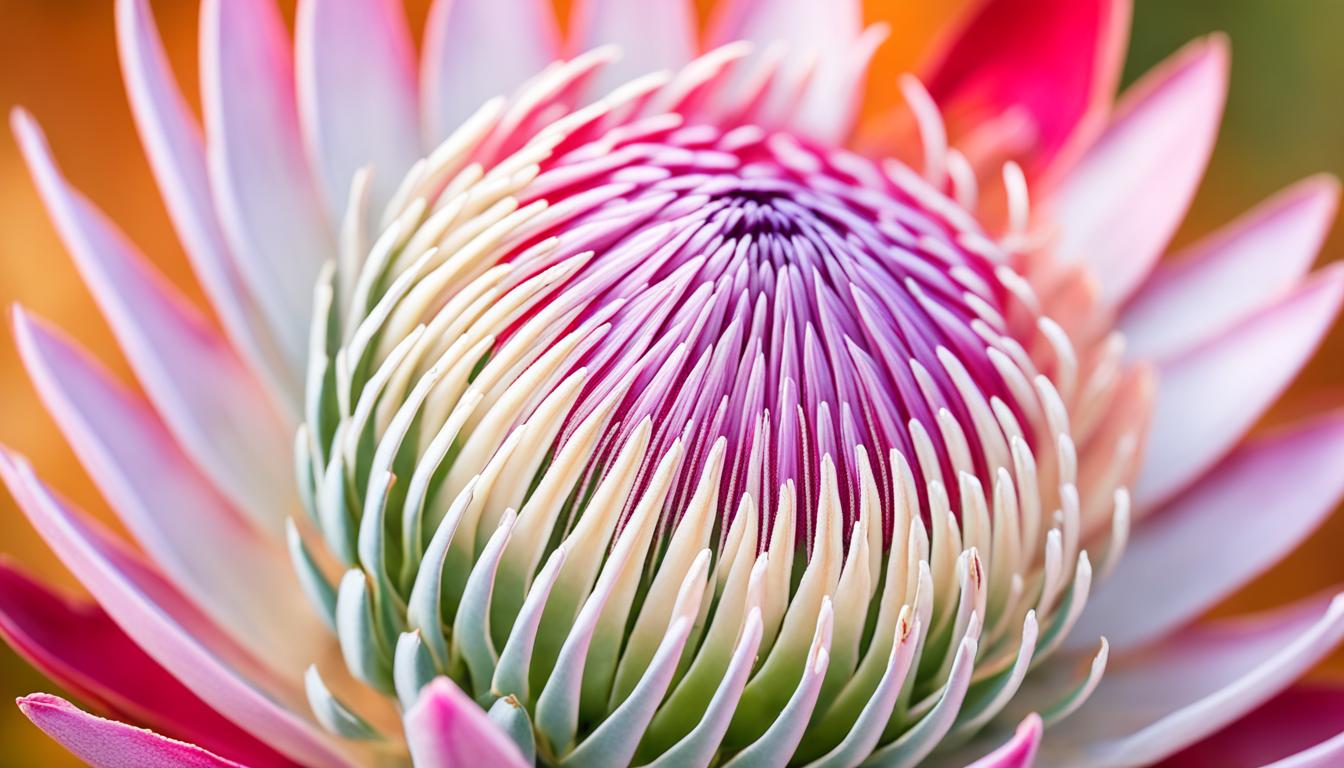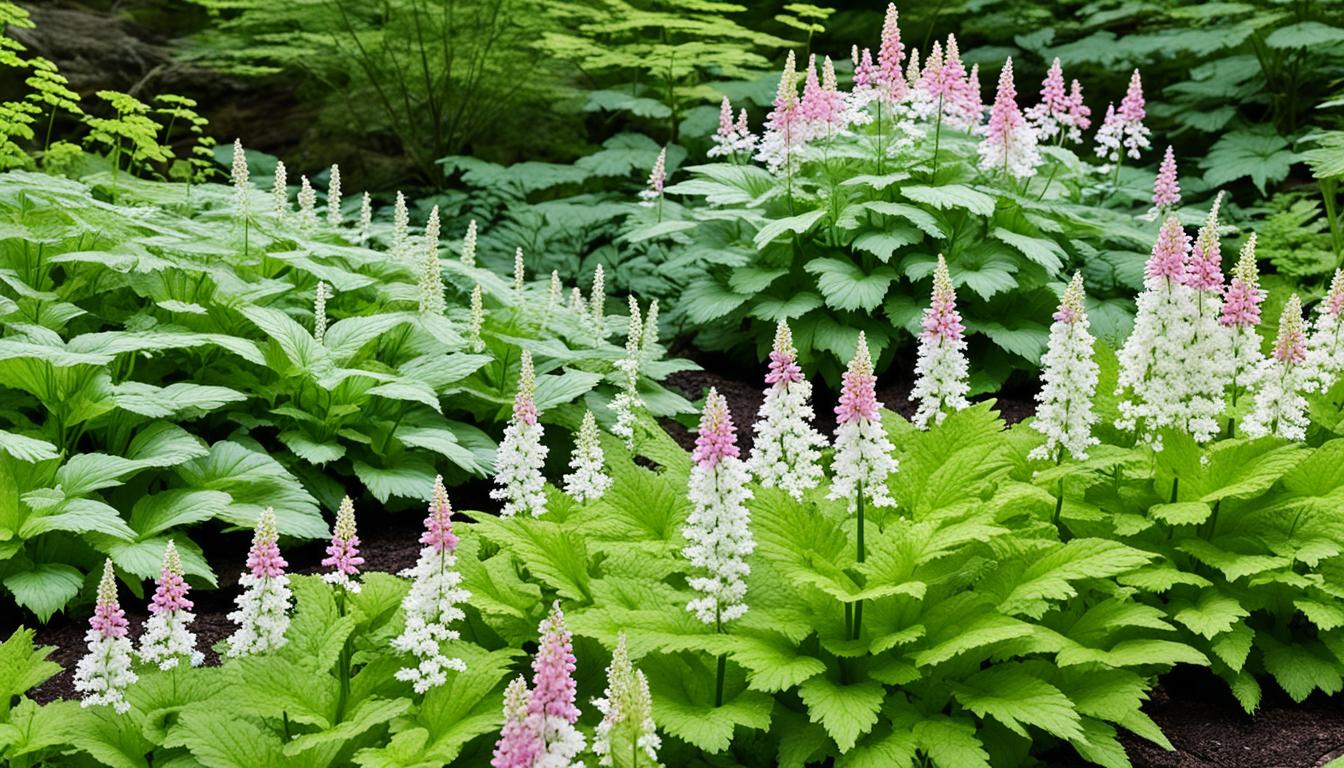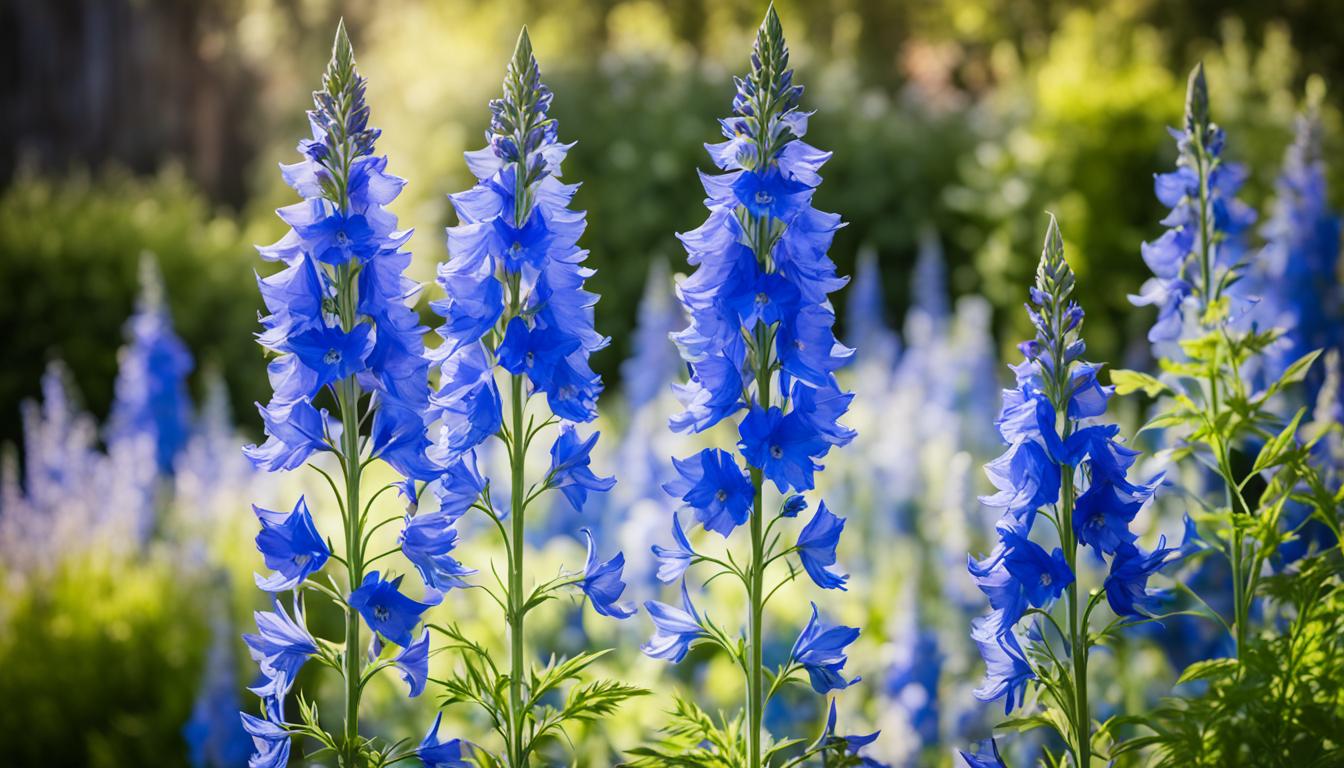In this guide, I’ll share expert tips and step-by-step instructions on how to grow and care for protea flowers. Proteas are stunning, exotic blooms that add a unique touch to any landscape.
Whether you’re a seasoned gardener or a beginner, you’ll find the essential information to cultivate vibrant, healthy protea plants.

Key Takeaways
- Proteas are exotic, vibrant flowers that can thrive in your garden
- Learn the ideal growing conditions and care requirements for healthy protea plants
- Discover expert tips on planting, watering, and maintaining protea flowers
- Understand the different varieties of proteas and their unique characteristics
- Gain the knowledge to successfully grow and enjoy these stunning, unique blooms
Grow A Protea and Care: Essential Tips for Vibrant Blooms
To grow thriving protea plants, you need to know their soil, sunlight, and climate needs. As a gardener, I’ve learned that a few key tips can help your protea flowers bloom beautifully. These tips ensure your proteas show off their stunning beauty.
Selecting the Right Planting Location
Proteas do well in soil that drains well and is a bit acidic. Choose a spot that gets at least 6 hours of sunlight a day.
Don’t pick areas with heavy clay soils or where water tends to collect, as proteas can get root rot in these conditions.
Preparing the Ideal Growing Medium
Before planting, mix in some organic stuff like compost or peat moss to help with drainage and acidity.
Proteas like soil with a pH between 5.5 and 6.5. If your soil is too alkaline, you can lower the pH with sulfur or aluminum sulfate.
| Soil Requirement | Optimal Range |
|---|---|
| pH | 5.5 – 6.5 |
| Drainage | Well-draining |
| Organic Matter | Amended with compost or peat moss |
Optimizing Sunlight Exposure
Proteas love the sun and need at least 6 hours of direct sunlight daily. Pick a spot that gets lots of sunlight, like a south-facing garden bed or a sunny patio.
Stay away from places with lots of shade or partial sun, as this can make them grow tall and reduce flowers.
“The key to growing stunning proteas is to mimic their natural habitat as closely as possible, providing the right soil, sunlight, and growing conditions.”
By using these tips for taking care of proteas, you’ll grow healthy plants that bloom beautifully every season.
Understanding the Protea Plant
Before we dive into how to care for protea plants, let’s learn about their origins and unique features. These flowers have a rich history and thrive in different climates and environments.
Origins and Varieties
Proteas come from the southern hemisphere, mainly from South Africa’s Cape Floristic Region. This area is a hotspot for over 80% of the world’s protea species.
You’ll find everything from the Protea cynaroides, or King Protea, to the Leucadendron argenteum, or Silver Tree. These plants show off a wide range of shapes, sizes, and colors.
Growth Habits and Requirements
Protea plants stand out for their unique growth and specific needs. They can be small, bushy shrubs or tall trees.
All proteas prefer well-drained, acidic soil and a warm climate like the Mediterranean. Knowing how each type of protea grows and what it needs is key to growing them well.
| Protea Variety | Growth Habit | Ideal Climate |
|---|---|---|
| Protea cynaroides (King Protea) | Large, tree-like shrub | Mediterranean, subtropical |
| Leucadendron argenteum (Silver Tree) | Tall, slender tree | Temperate, coastal |
| Leucospermum cordifolium (Pincushion Protea) | Medium-sized, bushy shrub | Mediterranean, subtropical |
Learning about protea plants’ origins, varieties, and growth helps gardeners choose the best conditions for them. This way, these beautiful flowers can flourish.

Caring for Your Protea Plant
Keeping your protea plant healthy is key for beautiful blooms every year. I’ll share tips on watering, pruning, fertilizing, and protecting it from pests and diseases. Follow these expert tips to grow a thriving protea garden.
Watering your protea right is vital. These plants like soil that drains well and should get watered deeply but not too often.
Water once a week in the growing season, letting the soil dry out a bit between. Too much water can cause root rot, so be careful.
Pruning is also crucial for your protea. Trimming helps the plant grow fuller and bloom more, and keeps it looking good.
Cut after it flowers, using sharp secateurs to remove dead or damaged stems. Don’t cut too much into the woody parts to avoid harm.
FAQ
What are the ideal soil requirements for growing proteas?
Proteas do best in soil that drains well and has a pH between 4.0 and 6.0. They like sandy or loamy soil that’s poor in nutrients and low in fertility. Heavy, clay-based soils can cause root rot.
How much sunlight do protea plants need?
Proteas need at least 6 hours of direct sunlight every day. They don’t like shade and won’t flower well in shaded areas.
What are the best climate conditions for growing proteas?
Proteas love Mediterranean-style climates with mild, dry summers and cool, wet winters. They’re great for coastal areas and can handle light frosts. But, they don’t like hot, humid places or severe winters.
How often should I water my protea plant?
Proteas are drought-tolerant once they’re established. Water them deeply but not too often. Let the soil dry out a bit between waterings. Don’t overwater, as it can cause root rot.
Do protea plants require regular fertilizing?
Proteas don’t need much fertilizer. Give them a slow-release fertilizer in early spring, as the package says. Don’t use high-nitrogen fertilizers, as they make too much foliage and fewer flowers.
How do I prune my protea plant?
Prune your protea right after it flowers to help it grow new stems and keep its shape. Cut out dead, damaged, or crossing stems. Thin the plant’s inside to improve air flow. Don’t prune in the hot summer.
How can I protect my protea plant from pests and diseases?
Watch out for pests like aphids, scale insects, and mealybugs. Get rid of them by hand or with mild insecticidal soap. Also, protect your protea from fungal diseases like root rot by ensuring good drainage and air flow.



